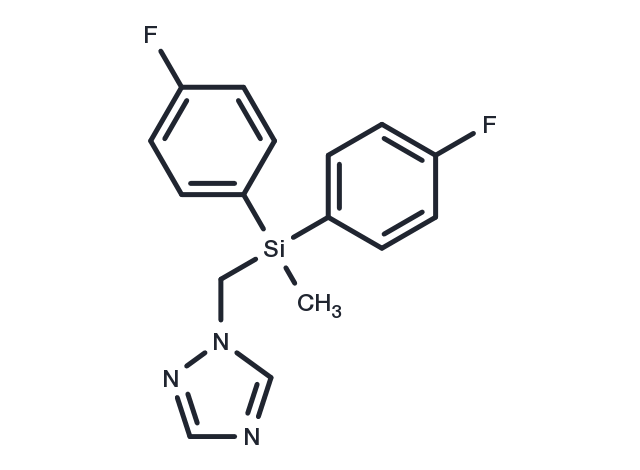Powder: -20°C for 3 years | In solvent: -80°C for 1 year


Flusilazole (DPX6573) is an organosilicon fungicide with broad spectrum antifungal effects. Flusilazole can be used to control fungal infections on a variety of vegetables and fruits.

| Pack Size | Availability | Price/USD | Quantity |
|---|---|---|---|
| 50 mg | In stock | $ 49.00 |


| Description | Flusilazole (DPX6573) is an organosilicon fungicide with broad spectrum antifungal effects. Flusilazole can be used to control fungal infections on a variety of vegetables and fruits. |
| Synonyms | Nustar, DPX-6573, Olymp, Flusilazol, DPX6573, Sanction |
| Molecular Weight | 315.39 |
| Formula | C16H15F2N3Si |
| CAS No. | 85509-19-9 |
Powder: -20°C for 3 years | In solvent: -80°C for 1 year
DMSO: 95 mg/mL (301.21 mM), Sonication is recommended.
You can also refer to dose conversion for different animals. More
bottom
Please see Inhibitor Handling Instructions for more frequently ask questions. Topics include: how to prepare stock solutions, how to store products, and cautions on cell-based assays & animal experiments, etc.
Flusilazole 85509-19-9 Microbiology/Virology Antifungal Nustar Fungal DPX 6573 DPX-H6573 Inhibitor inhibit DPX-6573 Olymp Flusilazol DPX6573 Sanction inhibitor
